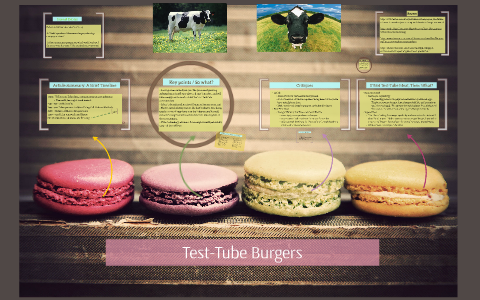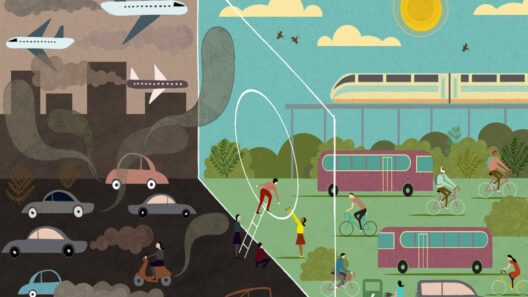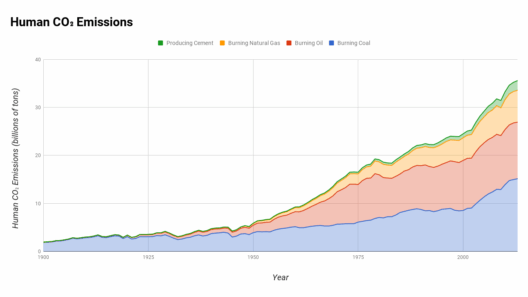The culinary world is on the cusp of a groundbreaking revolution. Imagine a future where your next burger doesn’t come from a traditional farm but rather is cultivated in a lab. Yes, we’re talking about test tube burgers, also known as cultured meat or lab-grown meat. Could this novel innovation be a surprising solution to global warming? While this proposition may seem whimsical, the multilayered implications of lab-grown meat on environmental sustainability warrant serious consideration.
The production of conventional meat is notoriously resource-intensive, posing significant ethical and ecological dilemmas. Traditional animal farming contributes over 14.5% of global greenhouse gas emissions, according to various studies, exacerbating the ongoing crisis of climate change. The comparison to lab-grown meat reveals a stark contrast: cultured meat has the potential to reduce land and water use by as much as 90%. The production process occurs in a controlled environment, necessitating fewer resources while generating lower emissions.
How does it actually work? At its essence, lab-grown meat involves harvesting cells from a living animal and nurturally cultivating them in a lab environment, simulating natural growth processes. This method eliminates the need for raising livestock in conventional farms, thereby circumventing numerous challenges associated with traditional meat production, such as habitat destruction and the ethical dilemmas of animal welfare. In this light, lab-grown meat appears to embody the promise of a sustainable future — a tantalizing prospect for combating climate change.
Nevertheless, the transformation from a curious concept to widespread acceptance faces challenges. Initially, there is the matter of taste. The authenticity of lab-grown meat must compete not only with conventional meat but also with the public’s perception. Culinary diversity celebrated across cultures often hinges on the unique savoriness of traditional animal products. Can lab-grown alternatives evoke the same rich flavors and textures that people have come to cherish? The culinary industry is rising to this challenge; researchers are investing considerable resources in perfecting the taste, and chefs are exploring innovative culinary techniques that genuinely capture the essence of meat without relying on animal sources.
Moreover, scaling production from a laboratory bench to a commercial scale presents its own set of obstacles. The current costly methods of producing test tube burgers raise questions about economic feasibility. As with any emerging technology, the quest for economies of scale will dictate whether this revolution in protein production can be integrated into mainstream markets. Ultimately, making lab-grown meat affordable for the average consumer will be pivotal in determining its success and broad-based acceptance.
Public perception also plays a crucial role. While the allure of sustainable meat tickles the imagination, societal resistance may prove a formidable barrier. Misinformation, skepticism about food safety, and ingrained dietary habits could hamper acceptance. Effective communication and educational initiatives must elucidate the benefits of lab-grown meat, emphasizing its potential to mitigate climate change and preserve animal welfare.
Moreover, one essential consideration is the potential impact on traditional livestock farmers. The rise of cultured meat could precipitate significant changes in farming economies, particularly in rural areas that rely on animal husbandry as their primary source of income. As the world grapples with these changes, a delicate balance must be struck. How do we transition existing agricultural practices without creating a socioeconomic rift? Innovative policies that support farmers in diversifying their production methods and acquiring new skills are imperative.
While the road to acceptance may appear fraught with hurdles, the potential benefits of lab-grown meat offer a beacon of hope. Reducing greenhouse gas emissions alone is a monumental win in the fight against climate change. Furthermore, lab-grown meat’s efficiency promises to lessen deforestation and conserve water — vital resources that are under increasing pressure from climate change and human consumption patterns. Thus, the question remains: is the discomfort of this technological innovation worth the undertaking, or does culinary heritage hold too strong a grip on culinary preferences to embrace such breakthroughs?
Simultaneously, the rise of test tube burgers intersects with broader movements toward plant-based diets. For many, the thought of consuming meat cultivated in a lab elicits skepticism, yet embracing more plant-derived nutrients has gained traction as a method for improving individual health and protecting the planet. Could lab-grown meat act as a bridge? A compromise for those who remain hesitant about abandoning meat entirely while allowing for a more sustainable future?
Finally, the implications for global food security cannot be dismissed. With a burgeoning world population projected to reach nearly 10 billion by 2050, ensuring that adequate nutrition is available is an urgent priority. Cultured meat presents a radical alternative strategy; its production could help meet the rising demand without placing additional strain on our planet’s finite resources. Nevertheless, it does not eliminate the imperative for holistic reforms across agricultural practices and consumption habits.
In conclusion, the journey toward integrating test tube burgers into our daily diets encapsulates a broader narrative about food production, environmental sustainability, and human adaptation. While the hurdles are substantial, the potential for lab-grown meat to transform our ecological footprint is equally significant. As society grapples with climate change and food scarcity, the question remains: will we find a way to embrace this intriguing innovation and navigate the complexities of our food systems? The answer lies in stakeholder engagement, genuine consumer education, and a collective readiness to reimagine our culinary traditions in pursuit of a greener future.







